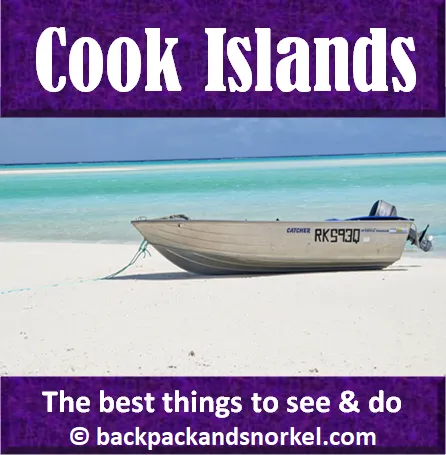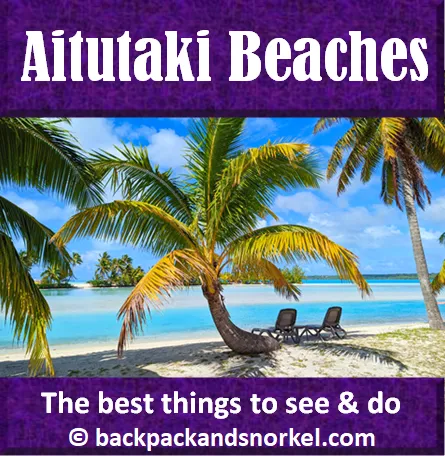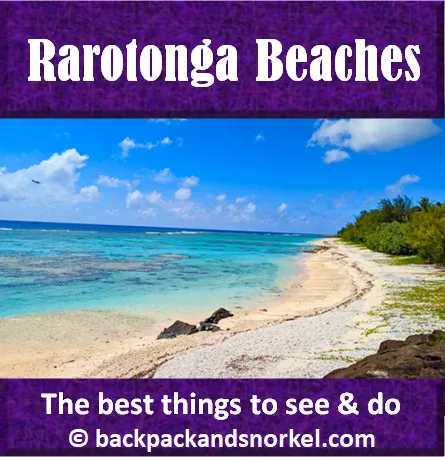Backpack and Snorkel Travel Guide for the 3 Best Snorkeling Spots in Rarotonga - Rarotonga Snorkeling Purple Travel Guide
This Rarotonga Best Snorkeling Travel Guide tells you what the best snorkeling spots in Rarotonga are and we show you photos of what you will see.
Rarotonga has beautiful white sand beaches with wonderfully turquoise waters and often good swimming and snorkeling.
We advise you to wear water shoes when you get into the water as you may need to walk over have quite a few rocks or coral pieces on many beaches and, to make matters worse, there is a possibility of stepping on a stonefish. Stonefish are one of the most venomous fish in the world. When you step on them, they can inject you with toxic venom that can cause excruciating pain or even death.
We have made a video about Rarotonga in the Cook Islands which shows you in depth what you will see. Please check it out.
Muri Beach at Muri Lagoon
The most popular beach on Rarotonga is Muri Beach. Muri Beach is bordering Muri Lagoon, which is approx. 1.4 miles (2.2 km) long and 0.6 miles (1 km) wide. Muri Lagoon starts at the Avana Passage in the north and ends at Motu Taakoka in the south. The three motus Motutapu, Oneroa, and Koromiri are part of the lagoon.
Despite its small size, it is Rarotonga’s largest source of tourist income.
Muri Beach lines the central and southern part of the lagoon. If you don’t stay in any of the beach-side hotels or resorts, then there is only one public access next to the Muri Beach Club Hotel.
The beach at the hotel is beautiful and well cared for. If you want more solitude, go a few feet north of the hotel and you will likely be all by yourself. The beach here is not groomed and narrower, but definitely well worth a visit. The trees provide sufficient shade.
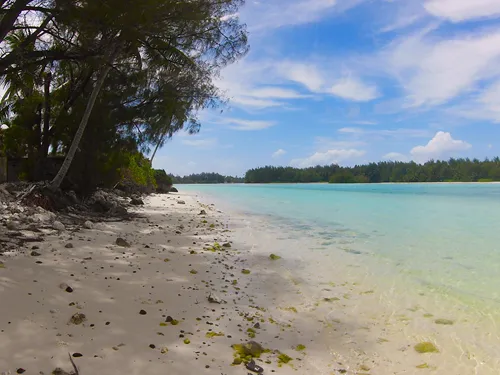
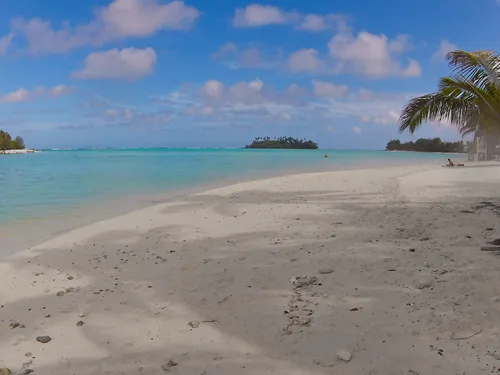
Swimming and snorkeling are generally good. The water depth is max. 5 ft (1.50 m), but be aware that there is a current parallel to the beach that you can swim against, but it can tire you out.
Muri Lagoon is a victim of its popularity. Many years of neglect and construction activity without insufficient investment in infrastructure have led to the lagoon becoming heavily polluted from agricultural runoff and leaking septic tanks. In 2015, the local government declared the environmental condition of the lagoon a national disaster. Quite a bit of work to clean up the mess has been performed, but permanent major was damage is done. You will see several colorful fish when you are snorkeling, but the vast majority of the corals are bleached and the water is a little hazy in several areas.
You can get into the water without water shoes, but we advise you to wear water shoes as there are quite a few rocks and sea cucumbers in the water, and to make matters worse, there is a possibility of stepping on a stonefish. Stonefish are one of the most venomous fish in the world. When you step on them, they can inject you with toxic venom that can cause excruciating pain or even death.
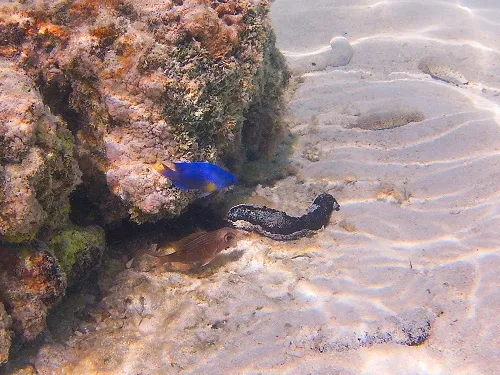
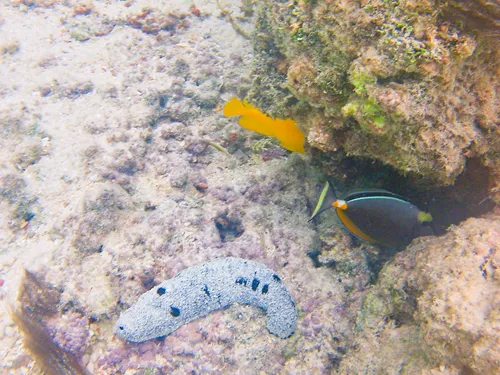


Please see our Rarotonga Purple Travel Guide in the Backpack and Snorkel Travel Store for much more photos.
Titikaveka Beach
Titikaveka Beach lies 2 miles (3.2 km) south west of Muri Beach outside the Muri Lagoon. It is often chosen as an alternative to Muri Beach as it has good swimming and snorkeling. We liked the beach better than Muri and we appreciated that it is much less visited. As a matter of fact we had it almost all for ourselves.
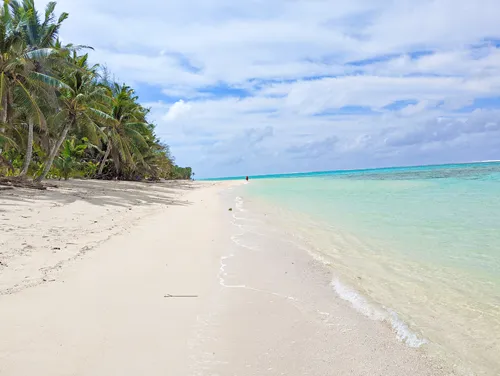

Snorkeling here is comparable to Muri Beach, but not as good as there are fewer fish. The corals here appear to be a little healthier, but not by much.
The trees provide ample shade, if needed.
There are fewer rocks and sea cucumbers compared to Muri Beach. Due to the potential presence of stone fish, we recommend to wear water shoes when you get into the water.
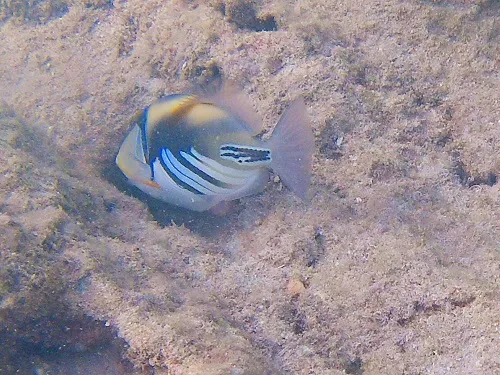
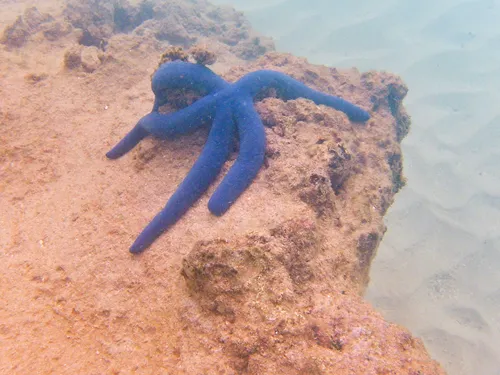


Please see our Rarotonga Purple Travel Guide in the Backpack and Snorkel Travel Store for much more photos.
Aroa Beach and Aroa Marine Reserve
The Aroa Marine Reserve (the ocean in front of the Rarotongan Beach Resort) is sometimes touted as the best snorkeling spot in Rarotonga. We found it to be much like Titikaveka Beach with the exception that there were more colorful fish, similar to what we saw at Muri Beach.
The lagoon is not very deep – it may be less that 5ft (1.50m) deep and that can make it difficult for inexperienced swimmers and snorkelers as they may hit the reef, damaging the reef and injuring their skin. So, be careful when you get in the water at low tide.
The outlying reef protects the Aroa Marine Reserve from dangerous currents and larger fish, so you will not see sharks or rays here.
At Aroa Beach, very much like at Titikaveka Beach, the beach is beautiful and the trees provide shade if needed.
Due to the potential presence of stone fish and low water levels, we strongly recommend to wear water shoes when you get into the water.
As the beach is facing west, you may see people flock here in the late afternoon to see the sunset.
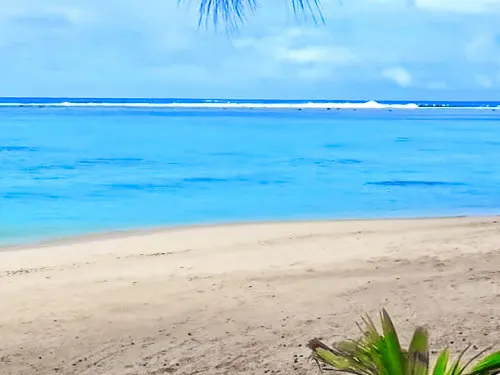

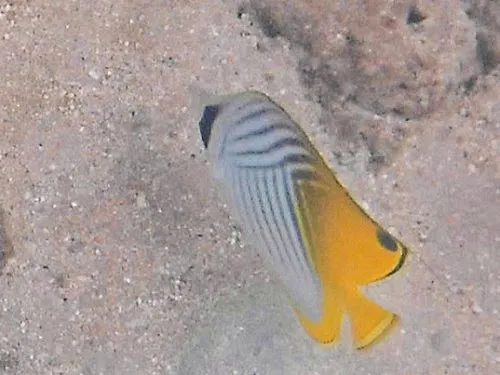

What part of the Cook Islands do you want to expolore now?
Author: Rudy at Backpack and Snorkel
Bio: Owner of Backpack and Snorkel Travel Guides. We create in-depth guides to help you plan unforgettable vacations around the world.
Other popular Purple Travel Guides you may be interested in:
Like this Backpack and Snorkel Purple Travel Guide? Pin these for later:




